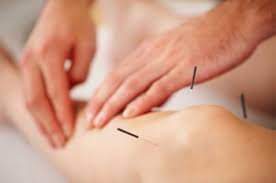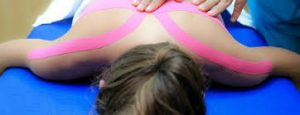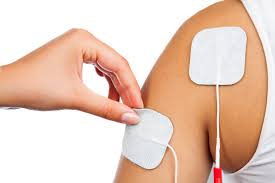Our Services

Dry needling
Dry Needling is an effective technique for the treatment of myofascial pain and muscular dysfunction, based on Western anatomical and neurophysiological principles.
Dry needling targets myofascial trigger points in skeletal muscle, which are usually painful on compression and can cause referred pain, referred tenderness, motor dysfunction and autonomic phenomena. The needle acts in effectively deactivating the trigger point, allowing optimal function and relief of pain.

Joint mobilisation
Joint mobilization is a specific passive movement of the articular (joint) surfaces performed by a physical therapist to decrease pain or increase joint mobility. It is a “hands-on” treatment provided by the therapist which may include moving joints in specific directions and at different speeds to regain optimum movement. This will result in improved tissue extensibility, increased range of motion of the joint complex, mobilization of soft tissues and joints and changes in muscle function.

Kinesiotaping
The Kinesio Taping® Method is a rehabilitative taping technique that is designed to facilitate the body’s natural healing process while providing support and stability to muscles and joints, without restricting the body’s range of motion. The tape is Latex-free and wearable for days at a time, and is safe for any age group. It is used to treat a variety of orthopedic, neuromuscular, neurological and other medical conditions by alleviating pain and facilitating lymphatic drainage. It assists the therapist in re-educating the neuromuscular system, reducing pain and inflammation, enhancing performance, preventing injury and promoting good circulation and healing.



Rehab
Physiotherapists play an important role in rehabilitating the patient to the same or similar level of functioning prior to the patients’ impairment.
Physiotherapy can assist in improving balance, ambulation, and activities of daily living, movement, muscle strength and loss of functional independence.
Orthopedic rehabilitation by a physiotherapist will involve the diagnosis, management, and treatment of disorders and injuries of the musculoskeletal system, including rehabilitation after orthopedic surgery. Orthopedic therapists are trained in the treatment of post-operative orthopedic procedures, fractures, acute sports injuries, arthritis, sprains, strains, back and neck pain, spinal conditions, and amputations.
Joint and spine mobilization/manipulation, dry needling, therapeutic exercise, neuromuscular techniques, muscle reeducation, hot/cold packs, and electrical muscle are modalities used to facilitate recovery in the orthopedic patient?

Strengthening
Strengthening exercises prescribed by your therapist will have different requirements depending upon your treatment goals, sport or function.
Basic muscle strength is required for joint control during your simple everyday tasks. These tasks can include static activities (such as sitting or standing posture) or dynamic activities (such as walking, running, reaching, lifting or throwing). The tasks that you require strengthening for pre-determines the specific strengthening exercises that will help you to achieve your goals. In addition to muscle strength, which can involve power, endurance and speed of contraction, the timing and balance of muscle contractions is very important.
Core strength training is a vital component of therapy in controlling conditions such as back pain. By optimizing your core strength one reduces ones chance of injury and results in improved performance. In basic terms, your core muscle provide a solid platform that your dynamic muscles enact upon.

Chest
Chest physiotherapy is the treatment provided by a physiotherapist with the goal of improved breathing by the indirect removal of mucus from the breathing passages of a patient. It aims to improve respiratory efficiency, promote expansion of the lungs, strengthen respiratory muscles, and eliminate secretions from the respiratory system.
The therapist will use various techniques to achieve this such as postural drainage, chest percussion, chest vibration, turning, deep breathing exercises, and coughing. It is usually done in conjunction with other treatments to rid the airways of secretions. These other treatments include suctioning, nebulizer treatments, and the administration of expectorant drugs.
